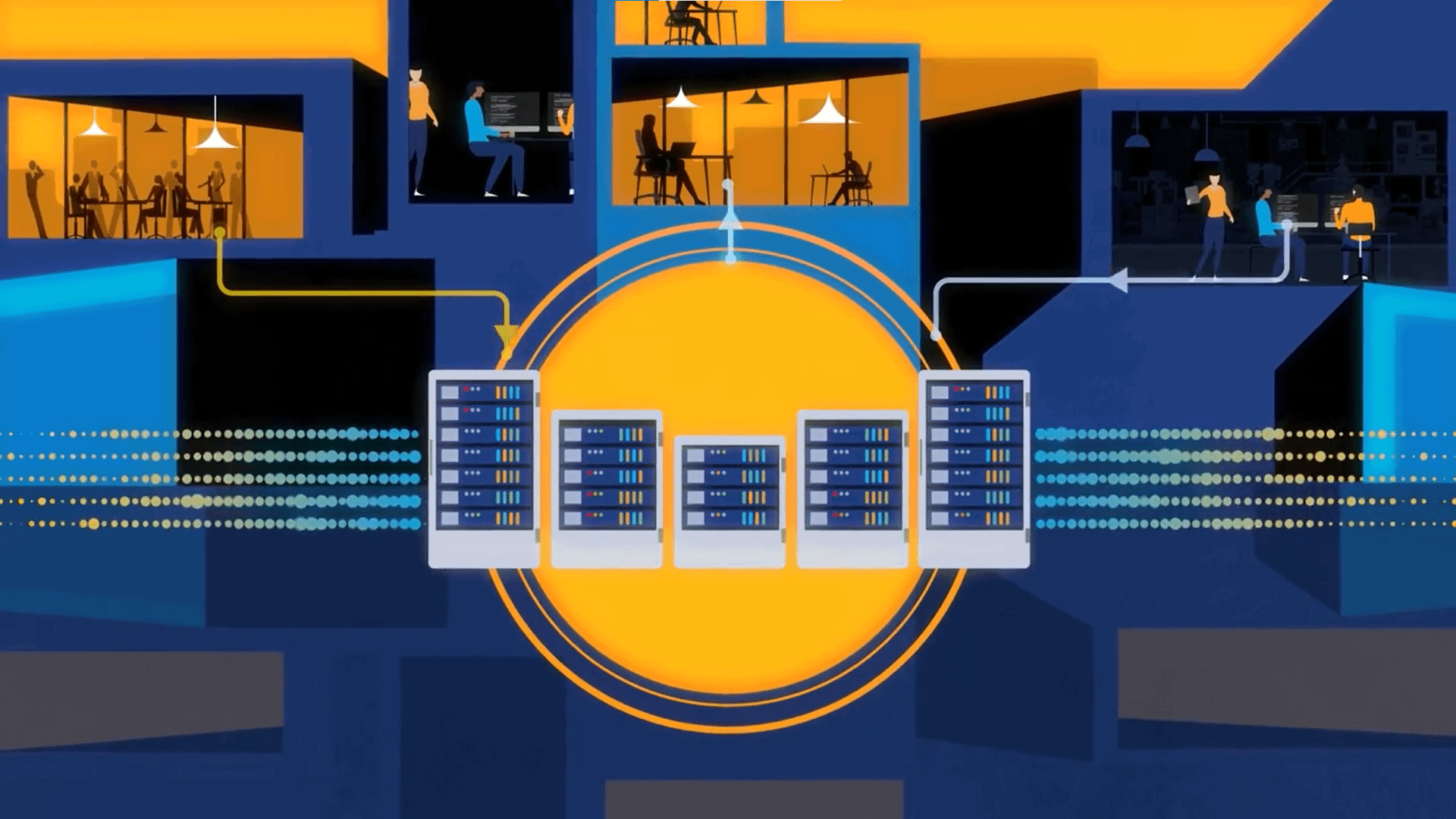
In 2026, the question for IT isn’t whether to adopt multimodal AI. It’s how fast they can do so without turning into chaos.
In 2026, enterprises will find themselves navigating a seismic shift in artificial intelligence. Gone are the days when text-only models ruled the landscape. The next wave is all about multimodal AI: systems that read, listen, see, and interpret the world just like we do. For IT leaders, this transformation is less about novelty and more about fundamental rewiring of how work happens. But make no mistake: the infrastructure, governance, and organizational demands are weighty.
From “type a command” to “show and tell the system”
Imagine an engineer holding up a smartphone to a noisy pump, describing a strange vibration. The AI doesn’t merely parse the voice; it recognizes the hardware visually, listens to the pattern, consults historical sensor logs, and instantly pulls up the correct maintenance playbook. That’s the promise of multimodal AI in enterprise workflows. Systems will fuse text, image, audio, video, and even sensor input, giving them human-like context awareness.
In another example from finance, compliance teams will no longer run separate searches across email, chat logs, and recorded calls. A truly multimodal system will allow a single query that understands tone, visual cues, verbal statements, and text transcripts. Flagging hidden risks that text-only tools would miss. This isn’t mere convenience, it’s a paradigm shift.
Multimodal AI will blur the lines between human and machine interactions. Instead of navigating menus or typing rigid prompts, employees will simply converse, gesture, or present visuals. The boundaries between interface and intent dissolve. IT departments must prepare systems not just to take commands but to perceive context. That means upgrading architectures to handle image and audio streams, accommodating new data pipelines, and managing compute loads far beyond conventional text-based workloads.
See also: Why Modern AI Needs NaaS
Why “agents that see and hear” will reshape enterprise workflows
The value of multimodal is not just richer input, but richer collaboration. In the agentic workflows of tomorrow, one AI agent will summarize a video meeting, another will scan whiteboard sketches captured on the fly, and yet another will generate code or documentation from that combined context, all without human re-keying. This is where work shifts from asking an assistant to working alongside a colleague who understands everything you said or showed.
However, this leap introduces major technical and operational challenges. First, infrastructure: multimodal models consume significantly more data, memory, and compute than text-only variants. Integrating sensor streams, video feeds, and audio logs means revamping pipelines, storage, and the network. Second, interoperability: your existing systems may not natively support image or voice inputs. Third, team skills: engineers must become fluent not just in language models but in vision, audio, and combined modalities. Without preparation, the risk of brittle systems, latency bottlenecks, and failed pilots skyrockets.
See also: Agentic AI and the Next Leap in Industrial Operations
How IT can stay adaptive without breaking production
If multimodal AI is arriving like a tsunami, IT teams must build for flexibility, not rigid monoliths. The safest approach is modular integration. Deploy APIs, use containerized workloads, and adopt agent frameworks so that new capabilities can be swapped out or upgraded without destabilizing production systems. By treating multimodal features as plug-ins, organizations retain agility even as the technology evolves. Treat infrastructure as an evolving platform, not a fixed project.
Meanwhile, the focus must shift from model expertise to AI fluency across the organization. Developers, analysts, and business users need to learn how to collaborate with AI. How to frame multimodal problems, review outcomes, and validate the reasoning. Rather than chasing every new model, invest in practices like spec-driven development and agentic engineering so that AI systems fit naturally into existing SDLC and governance frameworks.
IT leadership must also establish safe experimentation zones. AI sandboxes where multimodal models are tested with synthetic or non-critical data, agent orchestration frameworks trialled, and team capabilities grown gradually. This approach mitigates risk while accelerating adoption.
Governance, transparency, and ethics become core engineering disciplines
When your AI sees and hears as well as reads, the risk surface multiplies. Ethical governance cannot be an afterthought; it must be built in from the start. Organizations must define policies around data provenance, model usage, and human oversight. Every multimodal agent needs an accountable owner, an auditable chain of custody, and documentation of its decision logic. Without this, firms expose themselves to biased outcomes, opaque reasoning, and regulatory fallout.
The SDLC must embed governance checkpoints: bias testing on visual and audio inputs, explainability analyses on decisions made using mixed modalities, and human-in-the-loop validation for high-impact workflows. Agent autonomy must be constrained: autonomy policies ensure no multimodal agent acts without traceable human confirmation. Audit trails of prompts, image and audio inputs, and agent outputs become not just nice to have but required.
Transparency is now trust. Users must see why the system made a decision: model cards, version logs, and input-output records. If you can’t explain how your multimodal agent arrived at a recommendation in business terms, it shouldn’t be in production.
Real-world missteps that illuminate the danger zone
Recent governance failures illustrate the cost of amateurish adoption. Employees uploading sensitive documents into public AI tools taught us that prompt traffic must be treated as production data. Several firms faced regulatory scrutiny when black-box models produced biased outcomes and couldn’t explain decisions. Autonomous agents modifying data without oversight exposed entire chain-of-action visibility gaps. This is no longer speculative risk; it’s an operational reality. For IT leaders, this means governance must start at design time, not as a post-deployment bolt-on.
The competitive edge: using multimodal AI for value, not just novelty
The companies that win won’t focus on the models; they’ll focus on business friction. Embedding multimodal AI into existing workflows, not chasing flashy features, yields real impact. In marketing, for instance, agents that analyze voice sentiment, images, and chat logs together can identify behavioral patterns far more precisely than demographic models. The human marketer’s role shifts toward strategy and ethics; the AI drives scale and speed.
Successful cases always begin small, scale smart, and build cross-functionally. Models and agents must be treated as services: versioned, containerized, API first, not one-off prototypes. Scalability flows from architecture and collaboration, not from hype.
The road ahead for IT: from gatekeepers to enablers
The future of multimodal AI is both thrilling and demanding. IT leaders must lead the infrastructure rewrite, the skills transformation, and the governance redesign. But the reward is a foundation where employees interact naturally with systems, where work is reimagined not as command and control but as collaboration with intelligent agents, and where competitive advantage comes from speed, context, and adaptability.
In 2026, the question for IT isn’t whether to adopt multimodal AI. It’s how fast they can do so without turning into chaos. The organizations that win will treat multimodal AI as a strategic product, not a technical experiment. They will build systems that listen, see, understand, and act. They will govern those systems with the same discipline they once reserved for infrastructure and security. Because the future of enterprise is not just intelligent, it’s multimodal.































